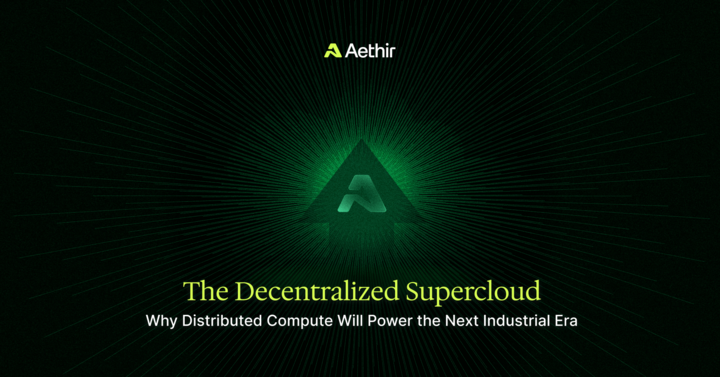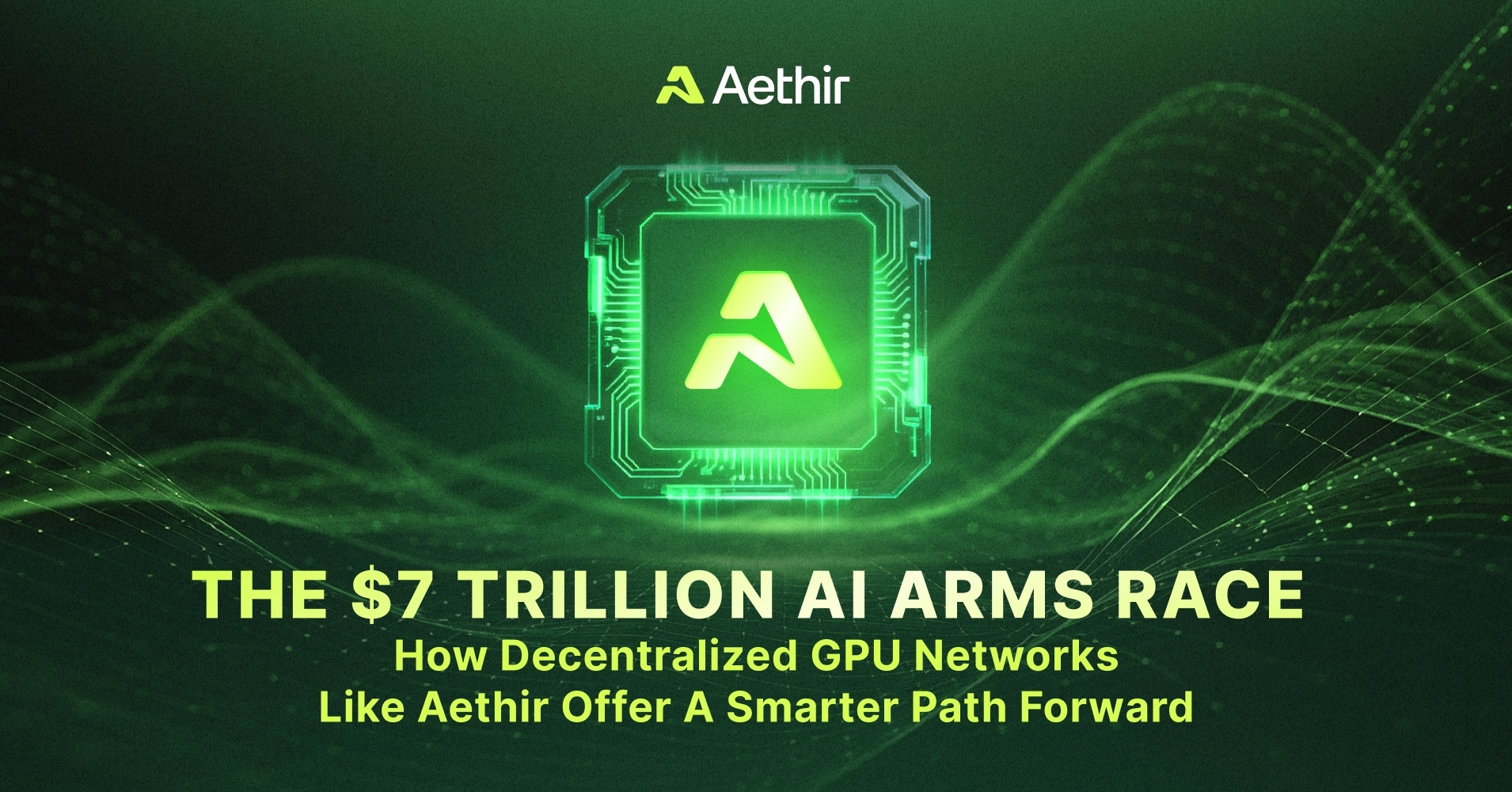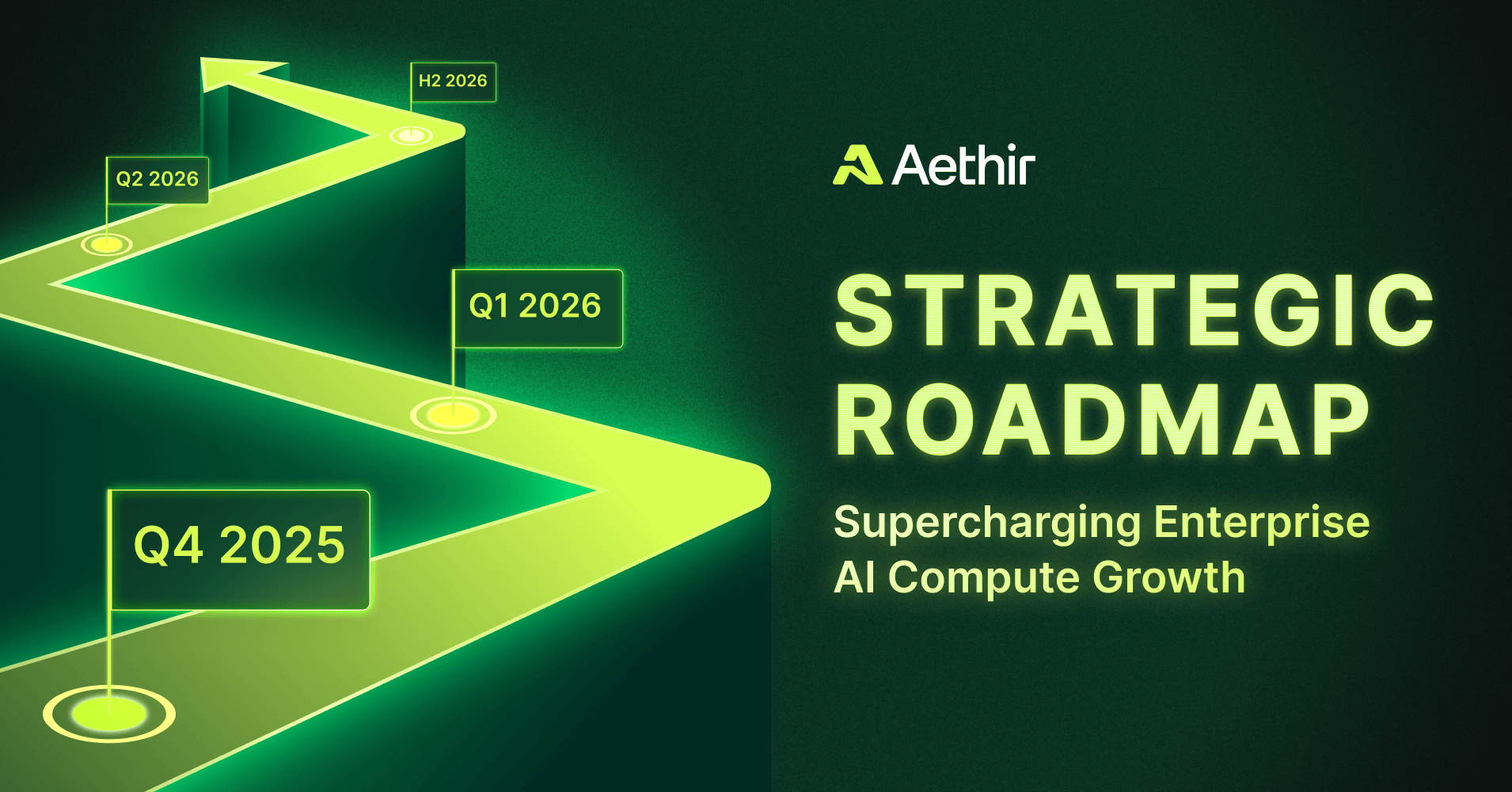Vì sao điện toán phân tán đang tái định nghĩa nền tảng của nền kinh tế AI
Trí tuệ nhân tạo (AI) đã trở thành công nghệ định hình thời đại. Trong mọi lĩnh vực — tài chính, y tế, giải trí hay logistics — các hệ thống AI đang thay đổi cách con người ra quyết định và tạo ra giá trị. Tuy nhiên, đằng sau làn sóng đổi mới đó là một hạn chế ít được chú ý: cơ sở hạ tầng vật lý cần thiết để vận hành AI.
Khi các doanh nghiệp chạy đua triển khai mô hình AI tiên tiến, họ nhận ra rằng “compute” – năng lượng của trí tuệ – đang trở nên khan hiếm, đắt đỏ và bị tập trung trong tay một số ít tổ chức.
Mô hình điện toán GPU phi tập trung của Aethir mang đến giải pháp cho các doanh nghiệp AI, gaming và Web3 bằng cách kết nối cung – cầu thông qua mạng lưới GPU phân tán toàn cầu. Được hỗ trợ bởi Aethir Digital Asset Treasury, quỹ dự trữ compute chiến lược đầu tiên, Aethir đang giúp mở rộng đổi mới AI với năng lực GPU hiệu suất cao, giá thành hợp lý và chất lượng doanh nghiệp.
Nút thắt ẩn trong cơn bùng nổ AI
Cuối năm 2024, các công ty phát triển AI quy mô lớn gặp phải tình trạng chờ đợi vô thời hạn khi GPU cao cấp khan hiếm. Các dòng GPU phục vụ huấn luyện và suy luận cho mô hình tiên tiến bị đặt hàng trước hàng tháng, thậm chí hàng năm — một dấu hiệu rõ ràng của giới hạn cấu trúc sâu hơn trong chuỗi cung ứng toàn cầu.
Theo PwC và McKinsey, đến năm 2030, AI có thể đóng góp từ 15,7 đến 22,3 nghìn tỷ USD cho GDP toàn cầu. Tuy nhiên, năng lực tính toán để đạt được con số đó vẫn hữu hạn. Các doanh nghiệp từng nghĩ rằng “compute luôn sẵn có” giờ đối mặt với thực tế mới: danh sách chờ, phân hạng truy cập, và định mức phân phối từ các nhà cung cấp hyperscale.
Trong bối cảnh đó, GPU trở thành “thùng dầu” mới của nền kinh tế số — được tích trữ, cạnh tranh, và mang tính chiến lược quốc gia.
Mặt trái của sự tập trung
Mô hình đám mây tập trung từng thúc đẩy tăng trưởng phần mềm suốt 20 năm qua, nhưng AI đang phơi bày giới hạn của nó.
Sự tập trung mang đến chi phí ẩn:
Chi phí đầu tư khổng lồ để xây dựng trung tâm dữ liệu chỉ phù hợp với các tập đoàn siêu lớn.
Giới hạn về độ trễ và khả năng phục hồi do tập trung hạ tầng tại một số khu vực.
Thiếu khả năng mở rộng linh hoạt khi nhu cầu GPU tăng đột biến.
Quan trọng hơn, sự phụ thuộc vào nhà cung cấp trung tâm khiến doanh nghiệp mất quyền chủ động, giá cả bị thao túng và tính linh hoạt biến mất.
Sự trỗi dậy của điện toán phân tán
Trên thực tế, hàng ngàn trung tâm dữ liệu, công ty viễn thông và doanh nghiệp công nghệ trên toàn cầu đang sở hữu GPU chưa được khai thác hết. Họ có phần cứng, điện năng, mạng lưới — chỉ thiếu sự phối hợp.
Hạ tầng tính toán phân tán ra đời để giải quyết vấn đề đó. Thay vì dồn tài nguyên về một vài trung tâm, hệ thống này phân bổ và điều phối năng lực tính toán từ nhiều nút độc lập trên toàn cầu.
Ví dụ: Aethir đã xây dựng mạng GPU phi tập trung lớn nhất thế giới, với hơn 435.000 GPU container tại 200+ địa điểm ở 93+ quốc gia, phục vụ 150+ doanh nghiệp trong lĩnh vực AI, game và Web3.
Đối với doanh nghiệp, mô hình này giúp truy cập GPU gần như tức thì mà không cần chờ hàng năm. Đối với chủ sở hữu phần cứng, nó biến tài sản nhàn rỗi thành nguồn thu.
Các nghiên cứu chỉ ra rằng mô hình compute phân tán có thể giảm 50–80% chi phí so với đám mây tập trung, nhờ tận dụng tài nguyên sẵn có và giảm trung gian.
Luận điểm đầu tư mới cho hạ tầng AI
Mỗi kỷ nguyên công nghệ đều trao phần thưởng cho những ai sở hữu hạ tầng nền tảng:
Thế kỷ 19: đường sắt
Thế kỷ 20: điện và viễn thông
Kỷ nguyên Internet: cáp quang và trung tâm dữ liệu
Kỷ nguyên AI: cơ sở hạ tầng tính toán
Những nhà đầu tư dài hạn ngày càng nhìn nhận rằng giá trị bền vững nằm ở việc sở hữu “đường ray” cho AI, chứ không phải đặt cược vào token hay mô hình phần mềm.
Aethir Digital Asset Treasury ($POAI – NASDAQ), quỹ compute chiến lược đầu tiên, minh chứng cho xu hướng này. Nó cho phép nhà đầu tư tổ chức tiếp cận hạ tầng AI thông qua phương tiện tài chính truyền thống, đồng thời vẫn tạo doanh thu thực từ việc cho thuê GPU.
Ba lực lượng đang hội tụ
Nguồn cung GPU khan hiếm, với chu kỳ sản xuất kéo dài 1–2 năm.
Nhu cầu doanh nghiệp tăng vọt, khi ngân sách AI dự kiến vượt 200 tỷ USD năm 2025.
Hạ tầng phi tập trung trưởng thành, sẵn sàng đáp ứng tiêu chuẩn doanh nghiệp.
Sự hội tụ này mở ra bước ngoặt lịch sử về cách hạ tầng tính toán được cung cấp và sở hữu.
Từ đầu cơ sang sở hữu hạ tầng chủ động
Thị trường tài sản số trong quá khứ khuyến khích nắm giữ thụ động — giữ token, staking, chờ tăng giá.
Giờ đây, kinh tế hạ tầng đòi hỏi quyền sở hữu thực — vận hành các tài sản mang lại doanh thu thực tế.
Khi doanh nghiệp thuê GPU, dòng tiền được tạo ra ngay lập tức và tái đầu tư mở rộng hạ tầng, giống như các ngành công nghiệp truyền thống hơn là tài chính đầu cơ.
Lợi thế thực tiễn: Hạ tầng vượt trội
Aethir hiện xử lý hơn 166 triệu USD doanh thu doanh nghiệp hàng năm, cung cấp GPU NVIDIA H100 chỉ với 1,25 USD/giờ — rẻ hơn 79% so với AWS (6,04 USD/giờ) và 50% so với Lambda Labs (2,49 USD/giờ).
Không phải do trợ giá, mà nhờ hiệu suất cao và tối ưu chi phí của mô hình phân tán.
Khách hàng như TensorOpera AI đã giảm 40–80% chi phí huấn luyện và 20% thời gian huấn luyện khi chạy mô hình ngôn ngữ lớn Fox-1 trên mạng GPU H100 phi tập trung.
Hạ tầng vô hình của trí tuệ
Giống như điện, đường sắt hay Internet, hạ tầng AI tồn tại trong im lặng nhưng là nền móng của mọi tiến bộ. Người dùng không cần quan tâm máy chủ ở đâu — chỉ cần hệ thống hoạt động. Và chính sự “vô hình” đó khiến nó trở nên vô giá.
Khi GPU vẫn khan hiếm, người sở hữu hạ tầng nắm quyền định giá. Một khi hệ thống phân tán vượt trội về độ tin cậy và chi phí, chuyển đổi từ tập trung sang phi tập trung là điều tất yếu.
Tương lai phía trước
Cuộc cách mạng hạ tầng AI sẽ diễn ra theo ba giai đoạn:
Tập hợp: kết nối năng lực tính toán rời rạc thành mạng lưới thống nhất.
Tích hợp: thêm lưu trữ, mạng và dữ liệu để hình thành nền tảng AI toàn diện.
Mở rộng: cho phép doanh nghiệp tùy chỉnh và phối hợp nhiều nguồn compute khác nhau.
Đích đến là dân chủ hóa compute – nơi mọi nhà phát triển đều có thể truy cập sức mạnh tính toán ở mức giá hợp lý.
Giống như đường sắt, điện và Internet từng kết nối thế giới, AI đang tái cấu trúc cách con người biến thông tin thành hành động. Và những ai sở hữu nền tảng vật lý của trí tuệ sẽ là người nắm giữ giá trị lâu dài.
Cuộc cách mạng hạ tầng AI đã bắt đầu, và Aethir Strategic Compute Reserve đang đóng vai trò tiên phong trong việc mở rộng năng lực tính toán phi tập trung, hiệu suất cao, phục vụ cho kỷ nguyên AI mới.






